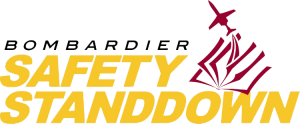 Released by Bombardier: The following article by Aviation Performance Solutions (APS) was released in the ‘Ask the Experts’ section of the Bombardier Safety Standdown website, titled ‘Why Recovery Training is Essential’, in July 2014.
Released by Bombardier: The following article by Aviation Performance Solutions (APS) was released in the ‘Ask the Experts’ section of the Bombardier Safety Standdown website, titled ‘Why Recovery Training is Essential’, in July 2014.
Why Recovery Training is Essential to Reducing Loss of Control In-Flight
There is a growing awareness in the aviation industry that the threat of Loss of Control In-flight (LOC-I) must be addressed. Across all sectors of flying – personal, flight instruction, business/corporate aviation, and in airline operations – LOC-I is the leading cause of fatalities.
An unexpected airplane upset often results in disorientation compounded by the psychological challenges of startle and surprise. Additionally, the flight control manipulations necessary to recover from a developing or developed upset can be counter-intuitive, requiring unique skill, awareness and discipline.
By systematically integrating the necessary academic, psycho-physiological, and manual handling aptitudes, we can counter the threat of LOC-I through robust and comprehensive Upset Prevention and Recovery Training (UPRT). The importance of RECOVERY practices in the development of PREVENTION skills to mitigate an evolving airplane upset situation is generally under appreciated. Unfortunately, the strong desire to powerfully enhance ‘upset prevention and awareness’ has caused some industry authorities to overlook ‘upset recovery’ as one of the most powerful and critical tools in magnifying upset awareness, recognition and prevention.
What does recovery have to do with prevention?
In an airplane upset event, aircraft control challenges are aggravated by improper handling, unfamiliar stimuli, and the psychological stressors of surprise and fear. These factors combine to create a much more complex threat than they do individually. Addressing these threats during training, while practicing disciplined UPRT solutions, positively enhances learning outcomes.
Four main influences of ‘upset recovery’ on the larger footprint of Upset Prevention and Recovery Training are outlined below:
1. Building the Mental Model
Increasing awareness, which assists in upset prevention through recognition and avoidance, is a byproduct of recovery. Escalating angle of attack (AOA) or attitudinal divergences to the point of requiring recovery skills develops essential pattern recognition. This improved recognition helps the pilot prevent upset events more efficiently and effectively earlier in the escalating loss of control situation.
2. Experience Breeds Prevention
The performance enhancement from upset recovery comes from the improved ability to process information due to familiarity with similar situations gained during training. Also, stress which slows thinking in a life threatening emergency comes from being rapidly inserted into unfamiliar, emotionally-charged and unpredictable situations. Exposure to similar prevention and recovery scenarios in UPRT diminishes the stress effect allowing the brain to function with greater efficiency and clarity.
3. Upset Recovery Skills are Unique
There are many examples to illustrate this truth: for instance, control manipulations in normal flight to achieve a desired outcome are often inappropriate in upset recovery beyond certain attitude and AOA thresholds. In these cases, training in prevention alone will not provide the necessary practice of counter-intuitive skills to correct a condition requiring recovery.
4. Integration of Key Elements
Integrated delivery of key UPRT elements (awareness, recognition, prevention and recovery) synergizes comprehension, effectiveness, and retention. The recovery element generates a powerful multiplying effect significantly improving the pilot’s ability to deal with the full impact of an unexpected upset encounter.
With regards to LOC-I, one thing is virtually guaranteed: doing the same training as has been done in the past will yield the same results – perpetuating LOC-I as the most lethal global threat to air safety at all levels of aviation. In order to reduce the LOC-I accident rate, something must change (see Industry Update below). The industry must explore new possibilities–not just the positive benefits regarding the development of new skills in pilots, but also the unintentional negative outcomes of utilizing aircraft in new training in roles that could eliminate margins of safety. For example, using Part 25 and Part 23 airplanes in an upset recovery training role up to, or even beyond, their certified and flight tested limits could have severe safety consequences. A demonstratable margin of safety, both in training airplanes and instructor, beyond the scope of intentional UPRT maneuvers is essential and must not be compromised by aviation authorities.
As the industry delves into the evolving arena of UPRT, some counter-intuitive relationships exist. Indeed, the accident rate would not be what it is today if aircraft and pilot behavior were as safe and effective beyond the upset threshold as they are before that boundary is passed.
Preventing an aircraft upset in the first place must always be our primary goal; unfortunately, history clearly shows us this is not always possible. Recovery training is essential.
Industry Update: In March 2014, the International Civil Aviation Organization (ICAO) published the ICAO Manual on Aeroplane Upset Prevention and Recovery Training. It addresses the concerns of this article and requires all 191 member states of ICAO to demonstrate compliance within 2 to 5 years. More info: APS Speaks at ICAO Loss of Control In-flight Symposium
For a more in depth discussion of this topic, please review Why Upset Prevention Training Alone is Not Enough .
Sincerely,
Paul BJ Ransbury, President
Aviation Performance Solutions
apstraining.com
Randall Brooks, VP Training
Aviation Performance Solutions
apstraining.com/texas
For more information about BJ Ransbury and Randall Brooks visit our Bombardier Safety Standdown Experts Page.




Comments: